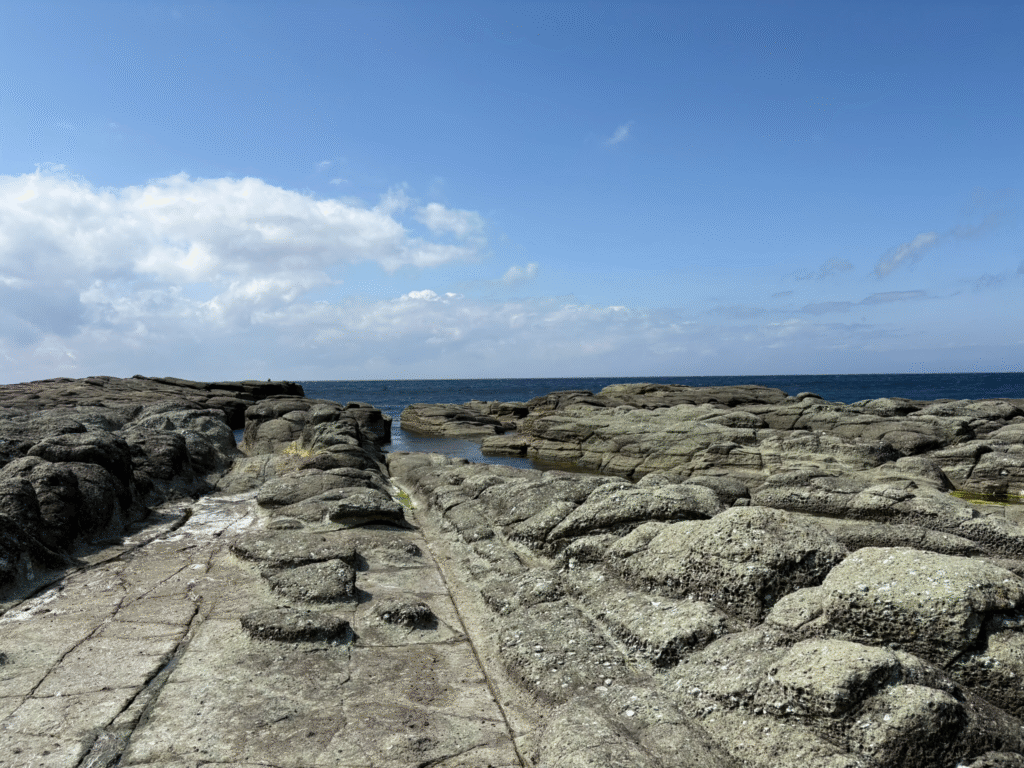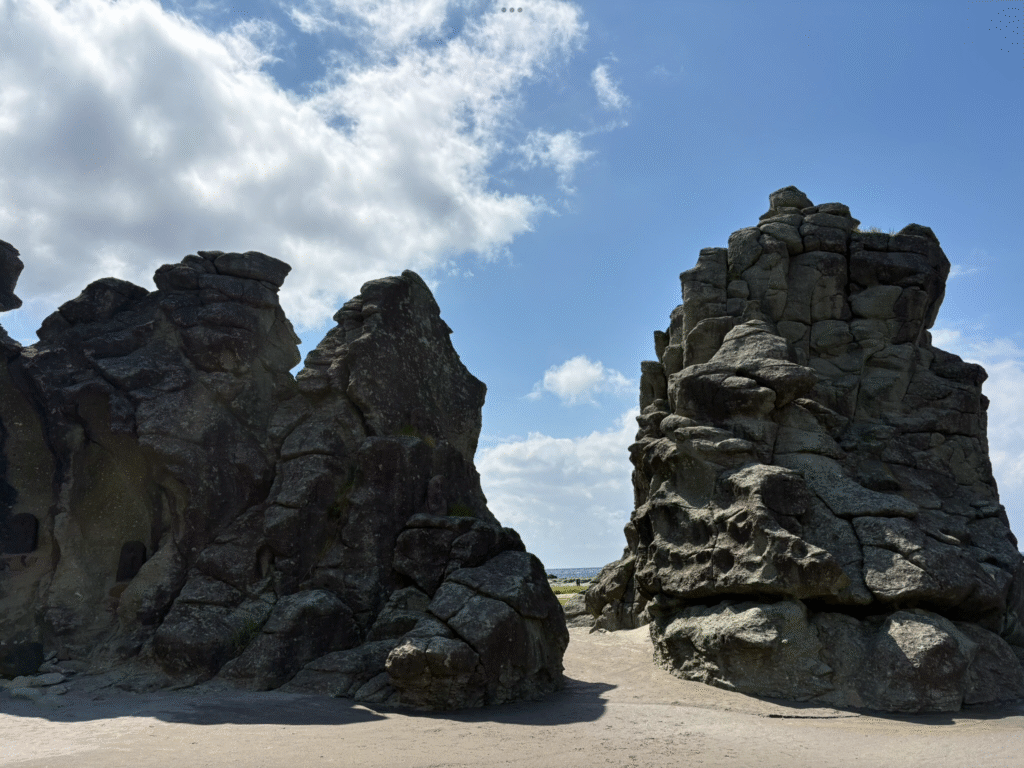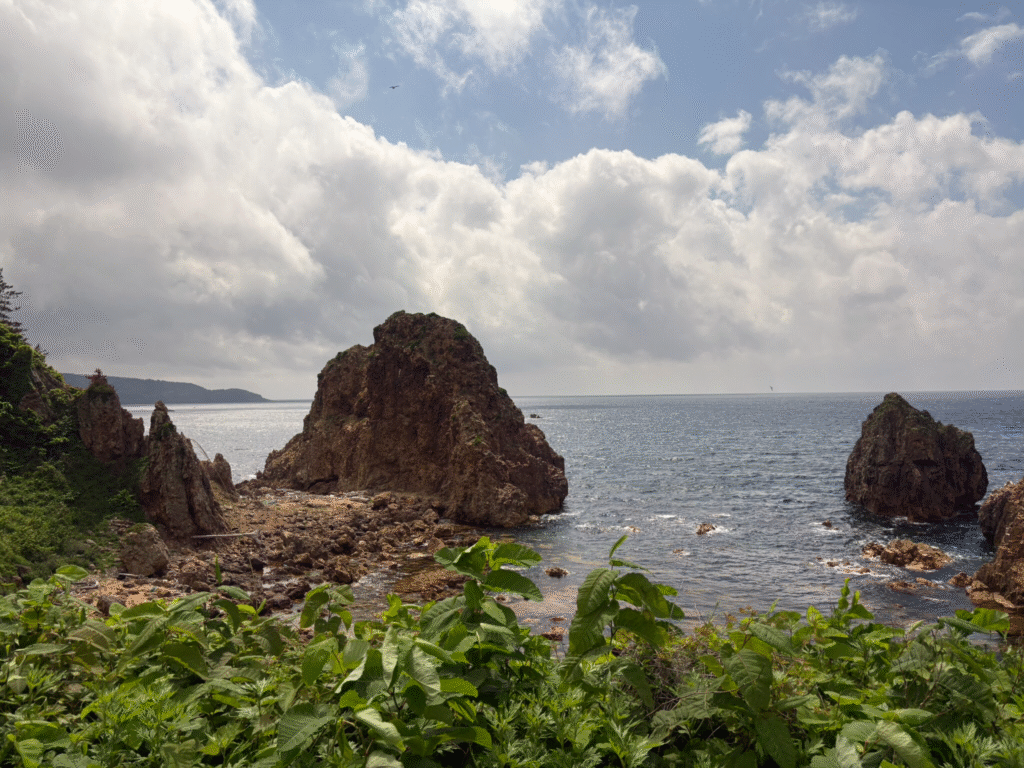
J,
Such unique rock formations by the sea, how is it formed?
Monday,
Ah, you’ve stumbled upon some beautiful, ancient geology—these wave-carved coastal rock formations are like nature’s own sculpture garden. Let’s break down how these fascinating shapes came to be:
⸻
🌊 How Did These Rock Formations Form?
1️⃣ Volcanic or Sedimentary Origins
• Given Japan’s geology, these rocks might be volcanic basalt or andesite—lava that once cooled and solidified long ago, often during massive volcanic eruptions.
• Alternatively, some formations are sedimentary, formed from sand or silt that hardened over millions of years.
⸻
2️⃣ Wave Erosion
• The relentless pounding of waves against the rock over centuries (or even millennia) shapes them into smooth, rounded surfaces, creating a natural pattern that looks almost like an artist’s etching.
• Wave action exploits tiny cracks and weaknesses in the rock, gradually wearing them into depressions, channels, and even dramatic sea stacks or cliffs.
⸻
3️⃣ Salt and Wind Weathering
• The sea spray, carrying tiny salt crystals, seeps into the rock’s surface. When the water evaporates, the salt expands in cracks, helping to break the rock apart over time.
• Wind also carries sand that slowly polishes and sculpts the surface.
⸻
4️⃣ Tectonic Activity
• Japan is a tectonically active region, so uplift and earthquakes can tilt or expose these rocks in new ways, adding to the drama of the landscape.
⸻
🌟 Why They Look So Unique
• The combination of volcanic history, continuous wave erosion, and salt-weathering gives the rocks their soft, undulating, otherworldly appearance—like nature’s own Zen garden.
• Each depression and groove is a record of time and tide.
⸻
🌿 A Small Haiku for the Rocks
Sea-carved stone—
silent testament
to time’s patient hand.
⸻
So when you walk here, you’re stepping on a living history book, written not in ink but in stone and sea. It’s a reminder that even the hardest things in nature are shaped, slowly but surely, by gentle, persistent forces. 🌊🪨✨


